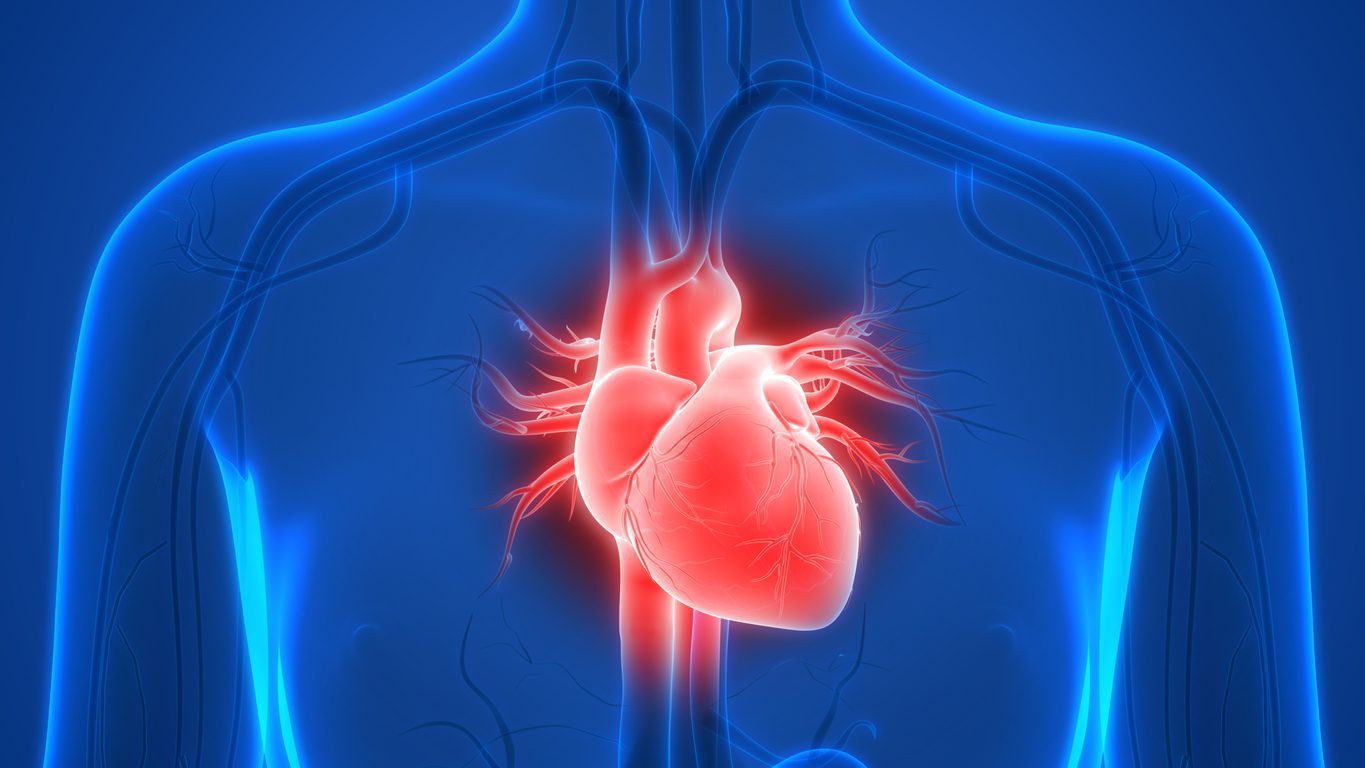Your cart is currently empty!
Category: Bone and Joint
-

Why Supplements with Collagen Peptides and Essential Amino Acids?
There are a lot of questions out there about what amino acids are and how they relate to our overall health and well-being. The purpose of this article is to help you develop a basic understanding of not only what amino acids and collagen are, but what they do and why we need them to lead a healthy life.
Amino Acids
Amino acids are the building blocks of protein and structural enzymes in the body. There are 2 main types of amino acids, essential and non-essential. There are 20 amino acids in total, 9 of which are essential amino acids which the body cannot make on its own. Essential amino acids include methionine, lysine, phenylalanine, threonine, tryptophan, leucine, isoleucine, histidine, and valine. Three of the essential amino acids, methionine, lysine, and phenylalanine are called branched-chain amino acids and they account for 20% of the amino acids of muscle. A branched-chain amino acid (BCAA) is just that, they have a branched-chain structure.
Essential amino acids are required by external sources to form specific proteins in the body necessary for cell development. All 9 essential amino acids are found in red meat, fish, poultry, eggs, and animal milk products which not only come with the amino acids but with B12 which can also be derived from plant sources such as algae, seaweed, and nutritional yeast. Additionally, there are plant sources such as buckwheat, quinoa, spirulina, chia seeds, hemp seeds, and soy that contain all 9 amino acids. Many other plant-based foods have some of the essential amino acids, so combining plant-based foods in the diet such as beans, rice, legumes, lentils, seeds, nuts, chickpeas, broccoli, and spinach will ensure all 9 essential amino acids are being supplied.
The 11 remaining non-essential amino acids include alanine, arginine, asparagine, aspartic acid, cysteine, glutamic acid, glutamine, glycine, proline, serine, and tyrosine. All of the non-essential amino acids are synthesized in the body primarily from glucose with exception of tyrosine which is synthesized by phenylalanine and are therefore not essential in the human diet. The body requires the combination of essential and non-essential amino acids for the building of specific proteins.
The daily recommended value of protein is 46-63 grams per day. A 6-ounce beef steak has almost 49 grams of protein, 2 eggs have just over 12 grams and a single cup of lentils has almost 18 grams of protein. While many plant-based proteins are not as rich in amino acids as animal products and most plant-based foods do not have all 9 essential amino acids, they do come with other benefits such as vitamins, minerals, antioxidants, and fiber to name a few.
Why supplement with essential amino acids?
For many aging people simply consuming protein-rich foods is not enough. The body must break the proteins down into amino acids for absorption. As we age we lose our ability to break proteins down into amino acids. Many vegans do not get the amino acids they need from plant-based foods. A poor diet may also leave one deficient in essential amino acids. Essential amino acid deficiencies due to a restrictive essential amino acid diet or inability to break proteins down into amino acids can lead to a wide variety of health issues including but not limited to muscle wasting, loss of appetite, autoimmune conditions, allergies, fatigue, toxicity, and brain-related conditions.
Collagen Peptides
The combination of essential and non-essential amino acids makes up oligopeptides, peptides, and polypeptides otherwise known as proteins. A peptide is two or more amino acids joined together by peptide bonds (2-50 amino acids). Peptides can be subdivided into oligopeptides (2-20 amino acids). A polypeptide is a chain of many amino acids (50-2000 amino acids). Polypeptides can also be called proteins. The largest protein chain in humans is Titin and has more than 27,000 amino acids.

The collagen peptide is the most abundant protein in the animal kingdom including the human body consisting of about a third of the body’s protein composition. Collagen is what holds us together and comes from the Greek word “Kolla” means glue. While collagen is not as complicated as a Titin protein, there are approximately 1,400 amino acids that make up a collagen protein in 3 polypeptide chains wound together in a triple right-hand helix consisting primarily of 3 main non-essential amino acids being glycine, proline, and hydroxyproline.
There are 4 group types of collagen in the human body
- Densely packed fibers found in skin, bones, tendons, fibrous cartilage, connective tissue and teeth and represents 90% of your body’s collagen
- Loosely packed fibers found in cartilage which cushions bones
- Structures of muscles, organs, and arteries
- Filtration function within the skin
Why supplement with collagen?
As we age we produce lower quality collagen leading to visible signs of less supple skin and weakened cartilage. People who smoke or have smoked may experience reduced collagen production. Ultraviolet radiation from sunlight reduces collagen production. Too much sugar and carbs interfere with collagen’s ability to repair itself.
-

Show Your Heart Love With Important Vitamin K2
If you’ve ever suffered from cardiovascular disease or heard your heart isn’t in good shape from the doctor, you’re not alone. According to the Centers for Disease Control and Prevention (CDC) about one in five heart attacks are silent, meaning the person wasn’t aware they had one, and about 647,000 Americans die from heart disease each year. Our hearts are essentially the center of our lifeforce and learning we may not have been taking care of our hearts like we should be a harder pill to swallow than any medication or supplement.
While the damage may have been done early on, unbeknownst to our younger selves, further damage to the heart and cardiovascular disease, in general, may be prevented if a healthy lifestyle is followed. This includes daily exercise, not smoking, maintaining a healthy weight, and eating a nutritious diet with heart-healthy ingredients.
One such nutrient found to benefit the heart is vitamin K, namely vitamin K1 and K2 which occurs in the human diet. Vitamin K2 is hard to find in the Western diet, which is why it’s important to consider a Vitamin K Supplement.
What do the studies say?
Vitamin K deficiency can lead to calcification (mineral deposits) of vessel walls that have been associated with a higher risk of cardiovascular events. Consuming enough vitamin K2 may lower the risk of vascular damage.
Vitamin K2 is usually found in fermented foods and is not usually included in junk foods commonly found in an American diet. Vitamin K1 can be found in plant-based foods such as kale, spinach, and broccoli.

Listen to the Heart Research
While it’s imperative to listen to what your doctor has to say, making sure your heart has the right nutrients can help give it the extra TLC it needs. Vitamin K2, specifically MK-7, has been widely researched for heart-healthy benefits.
Research has shown:
- If at least 32 mcg of vitamin K2 is present in the diet, then the risks for blood-vessel calcification and heart problems are significantly lowered.
- High-intake of vitamin K2 was associated with protection against cardiovascular events.
- Long-term use of MK-7 supplements (found in vitamin K2) improved arterial stiffness, which is related to hypertension and high blood pressure, in healthy postmenopausal women.
Being aware of how to take care of the heart can help it perform its functions so you can keep living an active life. If you have heart concerns, consult with your doctor and consider a Vitamin K2 supplement so you don’t fall victim to heart disease.
References:
- Maresz K. Proper Calcium Use: Vitamin K2 as a Promoter of Bone and Cardiovascular Health. Integr Med (Encinitas). 2015;14(1):34-39.
- McFarlin BK, Henning AL, Venable AS. Oral Consumption of Vitamin K2 for 8 Weeks Associated With Increased Maximal Cardiac Output During Exercise. Altern Ther Health Med. 2017;23(4):26-32.
- Geleijnse JM, Vermeer C, Grobbee DE, et al. Dietary intake of menaquinone is associated with a reduced risk of coronary heart disease: the Rotterdam Study. J Nutr. 2004;134(11):3100–3105.
- Gast GC, de Roos NM, Sluijs I, et al. A high menaquinone intake reduces the incidence of coronary heart disease. Nutr Metab Cardiovasc Dis. 2009;19(7):504–510.
- Knapen MH, Braam LA, Drummen NE, Bekers O, Hoeks AP, Vermeer C. Menaquinone-7 supplementation improves arterial stiffness in healthy postmenopausal women. A double-blind randomized clinical trial. Thromb Haemost. 2015;113(5):1135-1144. doi:10.1160/TH14-08-0675
- If at least 32 mcg of vitamin K2 is present in the diet, then the risks for blood-vessel calcification and heart problems are significantly lowered.
-

The Cost of Joint Pain
How to improve it
We’ve all experienced some level of joint pain from time to time. Some acute joint pain may be due to extreme physical exertion, while other joint pain may be more chronic. There are different degrees of joint pain such as sharp, dull, throbbing, aching and burning. Some joint pain can be intermittent and some constant. Posture, sedentary lifestyle, strenuous activities, injury, stress, seasons, weather, time of day and allergens are some examples of what can trigger joint pain. Depending on the type, source and degree of the pain, it can significantly limit our physical ability to move, work and spend quality time with family and friends. Pain can even diminish our appetite, cause sleeplessness and could even lead to long-term disability.
According to Johns Hopkins University in the Journal of Pain, chronic pain costs the U.S. as much as $635 billion per year. This exceeds the total cost of cancer, heart disease and diabetes. According to data from the 2008 Medical Expenditure Panel Survey, people with moderate pain had $4,516 in additional healthcare expenses than someone without pain. Those with severe pain had an additional $3,210 more in healthcare expenses than those with moderate pain. The results of this survey went on to identify people with joint pain had $4,048 in extra annual healthcare expenses than those who didn’t have joint pain, and people with arthritis pain had an additional $5,838 in additional annual healthcare expenses.

Nutritional supplements may be an option to research to see if they can help reduce the costs associated with joint pain. A 2016 multinational study called the MOVES trial found the combination of glucosamine and chondroitin as effective at relieving knee osteoarthritis pain and swelling as a commonly prescribed nonsteroidal anti-inflammatory drugs (NSAID) celecoxib branded as Celebrex. The glucosamine and chondroitin combination does take a week or two to take effect, while the medication takes immediate effect, but the supplements were found to relieve the pain and swelling without the harmful side effects of the medication.
Another supplement known as methylsulfonylmethane (MSM) has shown to benefit joint health in multiple short-term studies. Studies have found MSM significantly reduces inflammation. MSM has been shown to prevent the breakdown of protective joint cartilage. Another study found 100 people 50 years or older that took 1,200 mg of MSM per day for 12 weeks decreased pain, stiffness and swelling in the joints, compared to a placebo.
Omega-3 fatty acids found in fish oil help stimulate the body to upregulate chemicals that assist the body in controlling inflammation and downregulate inflammatory chemicals. One anti-inflammatory chemical in particular is peroxisome proliferator-activated receptors (PPAR). The liver releases PPAR which has been shown to decrease glucose and insulin levels as well as cholesterol and inflammation. Since Omega-3 fatty acids have been shown to stimulate PPAR, it produces a systemic effect of a wide variety of anti-inflammatory results. Daily supplementation with omega-3 results has been clinically proven to reduce morning stiffness and the number of tender joints and may reduce the need for pain medications.

In addition to supplements, there are many lifestyle choices we can make to enhance joint health. Daily and gentle low-impact physical activity such as walking and stretching can assist the body in moving excessive synovial fluid out of the joints which causes joint swelling and stiffness. Choosing joint-healthy foods rich in calcium, magnesium and potassium such as bok choy, kale and collard greens can help provide your body with what it needs to keep your bones healthy and strong. Foods to enhance the flexibility of joints include omega-3 fatty fish, nuts and seeds.
If you’re experiencing pain it’s important to speak with your doctor. You can also speak to your doctor about other pain relief options in addition to lifestyle options such as chiropractic, physical therapy, massage and even acupuncture. It’s important to try and relieve joint pain and stiffness and improve strength and mobility.
References:
1. Darrell J. Gaskin, Patrick Richard. The Economic Costs of Pain in the United States. The Journal of Pain, 2012; 13 (8): 715 DOI: 10.1016/j.jpain.2012.03.009
2. https://pubmed.ncbi.nlm.nih.gov/25589511/
3. https://www.ncbi.nlm.nih.gov/pmc/articles/PMC4502733/
4. https://pubmed.ncbi.nlm.nih.gov/23011466/
5. https://www.ncbi.nlm.nih.gov/pmc/articles/PMC4965662/ -

Improving Flexibility, Mobility, and Range of Motion
Inflammation is directly associated with symptoms such as swelling, pain, heat and limited mobility. Inflammation can affect your quality of life. Reducing your inflammation can alleviate these symptoms.
The Difference Between Range of Motion, Mobility, and Flexibility
Flexibility and mobility are two popular terms that are often used interchangeably. Many people think that if you stretch enough, you’ll maintain your mobility. However, they are different, and flexibility is only part of the equation when it comes to your movement.
Flexibility is a muscle’s ability to stretch when needed. For instance, imagine a rubber band. If you pull it in opposing directions, it should stretch. The same happens with flexible muscles. It’s worth noting that flexibility often refers to muscles, but can also apply to joints, ligaments, and tendons.
Mobility, on the other hand, is the ability of your joints to move through an intended range of motion. Your shoulder, which is a ball-and-socket joint, is designed to move in many directions. With normal mobility, you can move your shoulder side-to-side, forward and backward, as well as in circles. If you can’t move it in all of these ways, there is a lack of mobility in the joint.
Range of motion is simply a measurement of your mobility. It is the amount of movement you have at each joint. The primary determiner of how well your joints move relies on the shape and structure of your bones, how and where they come together, as well as the health of the ligaments and tendons that attach to your bones. Everyone has a unique available range of motion. That being said, you can improve your range of motion through a combination of stretching and strengthening exercises.
Common Factors That Affect Mobility and Flexibility
Injuries: Slips and falls are common, especially as you age. When you experience a physical injury, inflammation kicks in right away to begin repairing the wound and setting the stage for healing. Symptoms of acute inflammation, such as swelling and pain, can limit your mobility. To further complicate this, prolonged mobility impairment can make you more susceptible to physical injury. Click here to read more about preventing and recovering after a fall or injury.
Diseases: Similar to injuries, certain illnesses can prohibit you from moving freely and performing everyday activities. On the surface, if you don’t feel well, lack energy, or have other symptoms associated with a disease or illness, your mobility can be impaired. However, it’s important to note that chronic inflammation plays a part in many conditions. Inflammation brings with it symptoms of its own, such as aches and pains. These sensations can make movement uncomfortable and difficult.
Excess Fat Mass or Skin: Extra fat mass can prevent joints from moving through their full range of motion. This is possible by the fat or muscle physically limiting or blocking its movement. For example, a large amount of abdominal fat can limit the hips range of motion and prevent you from pulling your knee into your ribs.

Restore Your Body’s Vitality and Get Moving!
Don’t let stiff joints and limited mobility hold you back. Your lifestyle is a major contributing factor to your overall health as well as your mobility, flexibility, and range of motion. Here are a few things to keep in mind if you want to improve your movement.
- Reduce Inflammation
As explained above, inflammation can limit your ability to move with ease and comfort. There are many reasons your body could be inflamed, so it’s important to focus on your lifestyle as a whole
- Stretch Before and After You Exercise
Before you exercise or are going to be physically active, it’s important to perform dynamic stretches, such as arm circles or pulling your knees into your chest. These types of stretches help warm up your muscles and prevent strains or other injuries during exercise. Afterward, when your muscles are already warm, static stretches can safely be performed. Static stretches are done by holding a stretch for 15 seconds or longer. This type of stretching can significantly improve your flexibility and range of motion.
- Focus on Strength
What is mobility without strength? Muscle mass naturally decreases with age, but strength training can help. Strength training will not only help you improve your overall mobility, and it has other great benefits too
- Listen to Your Body
This might be the most important takeaway. Pushing yourself too far, over-exercising and not allowing enough time for recovery are all great ways to guarantee an injury. If you’re new to exercise or have issues with mobility, talk to a personal trainer or physical therapist first and start slow. Jumping into activity or forcing yourself to touch your toes will only set you back.
- Reduce Inflammation
-

Natural Ways to Ease Joint Discomfort
Joint health matters regardless of your age. Your joints play a critical role in your mobility and stability. Joint pain doesn’t just affect older populations; in fact, in the U.S. approximately one-third of individuals between 18 and 64 years of age have arthritis. Osteoarthritis is the most common type of arthritis and is the result of wear and tear over the years, but there are over 100 different types of arthritis.
Your joints affect your body’s ability to perform complex movements as well as daily tasks like rising out of a chair, getting dressed, and going grocery shopping. Joint swelling, pain, arthritis is traditionally treated with anti-inflammatory medications and painkillers. However, these drugs can cause serious side effects, and more natural approaches are growing in popularity.
Exercise Often
It cannot be emphasized enough; regular physical activity is the single most important thing you can do to improve your joint health and maintain joint mobility. Your joints are designed to be in motion. Even simple movements such as sitting and standing or doing household chores are fine, but the movements performed while exercising are better.
Synovial fluid is a thick liquid that lubricates and cushions your joints. Exercise increases the production of this fluid, in turn reducing joint stiffness and friction. Physical activity also boosts circulation which helps deliver oxygen and nutrients to your joints. Researchers have repeatedly found that individuals with arthritis notice a decrease in their symptoms during periods of physical activity. Thirteen different clinical trials examined walking as well as muscle-strengthening exercises and found that they were safe and effectively decreased pain and disability associated with arthritis.
Rest and Relax
As explained above, exercise is crucial to maintaining healthy joints. However, that’s only part of the equation. Getting adequate amounts of rest before periods of activity will allow your body to repair itself naturally and will help prevent potential injury and further joint pain.
Care for Your Gut
Many studies have found links between gut microbiome, rheumatoid arthritis, and other autoimmune disorders. Your immune system is influenced by trillions of microbes –both harmful and helpful – living inside your digestive tract. A growing body of research is suggesting that disruptions in the microbial ecosystem may contribute to many chronic diseases, possibly even certain types of arthritis. There is still a lot to learn about the possible links, but probiotics offer a wide range of health benefits including enhanced immune function and improved digestive health. Adding probiotic-rich foods to your diet, such as kimchi or kefir, or taking a probiotic supplement[MWSBLOGCOPY]probiotic supplement[/MWSBLOGCOPY] is a great way to support your gut health.
Control Inflammation
Joint discomfort is widespread and can result from many different conditions including damage from disease or injury. There are so many possibilities, so it’s important to speak with your doctor if you experience joint pain, swelling, or stiffness. That being said, adopting an anti-inflammatory diet can not only support joint function; it can help support healthy levels of inflammation and improved well-being. Anti-inflammatory foods include green, leafy vegetables such as kale, spinach, and broccoli, fruits like berries and apples, nuts and seeds, and fatty fish such as salmon. If you’re concerned about maintaining healthy inflammation, here are five ways to fight chronic inflammation[MWSBLOGCOPY]five ways to fight chronic inflammation[/MWSBLOGCOPY].
Spice Up Your Life
Alternative remedies are growing in popularity, and turmeric is known for its extensive use and benefits. Turmeric is a plant used in traditional Ayurvedic and Chinese medicine to relieve joint discomfort. It is still used today in foods, beverages, and supplements; and recent in vitro studies found that its antioxidant and anti-inflammatory properties inhibit joint inflammation.
Some choose to incorporate turmeric[MWSBLOGCOPY]incorporate turmeric[/MWSBLOGCOPY] into their diets by sprinkling turmeric in soups, on vegetables, or adding it to smoothies and drinks. However, this isn’t the most effective way to reap the benefits. Curcumin, the active ingredient in turmeric, isn’t easily absorbed without the addition of fat. Turmeric is fat-soluble meaning it dissolves in fat and can more easily be absorbed. If you are interested in adding a turmeric supplement to your routine, make sure you find one that also contains fat or oil to enhance absorption[MWSBLOGCOPY]contains fat or oil to enhance absorption[/MWSBLOGCOPY].
A Few Final Thoughts
If you aren’t already concerned about caring for your joints, now is the right time to start! Whatever your age or physical condition, you will benefit from using the information provided above to help you create a plan that will ease joint discomfort and help support a lifetime of mobility and freedom.
Want more information? Check out our Whole Person Approach to Joint Health

Promeric 95
Tumeric-based , natural support for joint discomfort.Gluten & GMO-Free!
*See catalog or website for up-to-date pricing and availability.